Our Blogs
From culinary delights to cultural insights, find inspiration and knowledge about our food and our culture!

Paneer is one of the most distinctive dairy ingredients in Indian cuisine. It is a fresh Indian cheese made by curdling milk with lemon juice or vinegar, resulting in a soft, creamy, and milky flavor. Unlike many other cheeses, paneer does not melt, making it incredibly versatile. It is also a great source of protein and can be used in curries, kababs, breads, and even desserts.
Paneer can easily be made at home using simple kitchen staples. Bring milk to a boil, add lemon juice or vinegar, and stir gently until it curdles. Strain the mixture through a cheesecloth, rinse the curds under cold water, and squeeze out the excess liquid. Press the paneer under a heavy pan and refrigerate for about an hour before cutting it into pieces for cooking.
There are countless dishes you can make with paneer, and below we have rounded up some mouthwatering recipes for you to try:
1. Matar Paneer
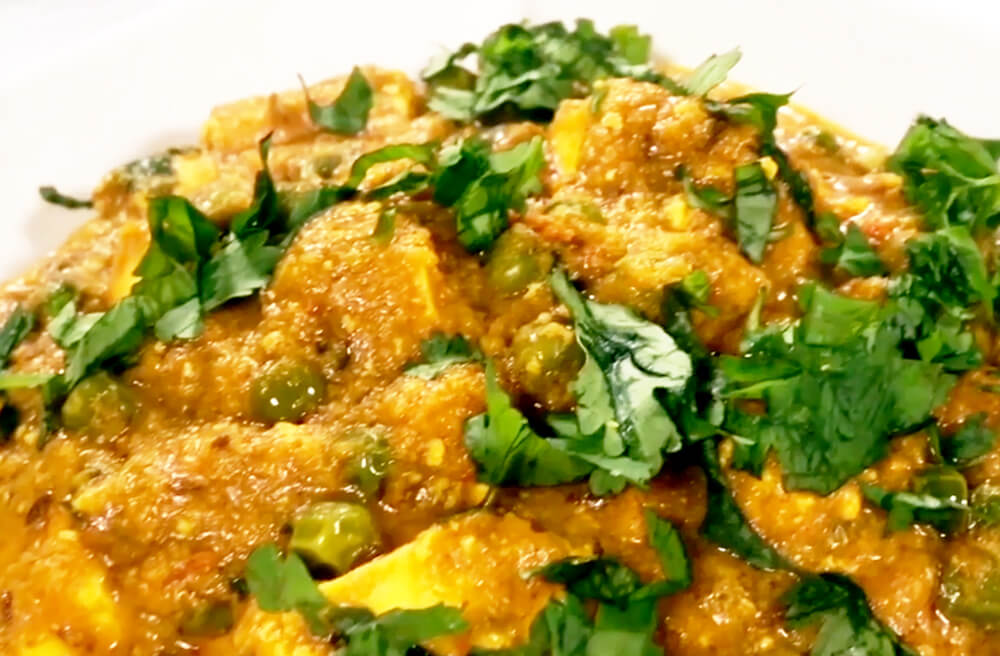
Matar Paneer is the most common and popular paneer dish made in Indian kitchens. Start by sautéing fresh ginger, garlic, onions, and tomatoes, then blend them into a smooth paste. In a heated pan, add spices like cumin, coriander, and red chili powder, followed by the prepared paste.
Stir in yogurt and peas, allowing the mixture to simmer. Finally, add the paneer cubes and let everything cook together for a few minutes. Garnish with fresh cilantro before serving.
2. Palak Paneer
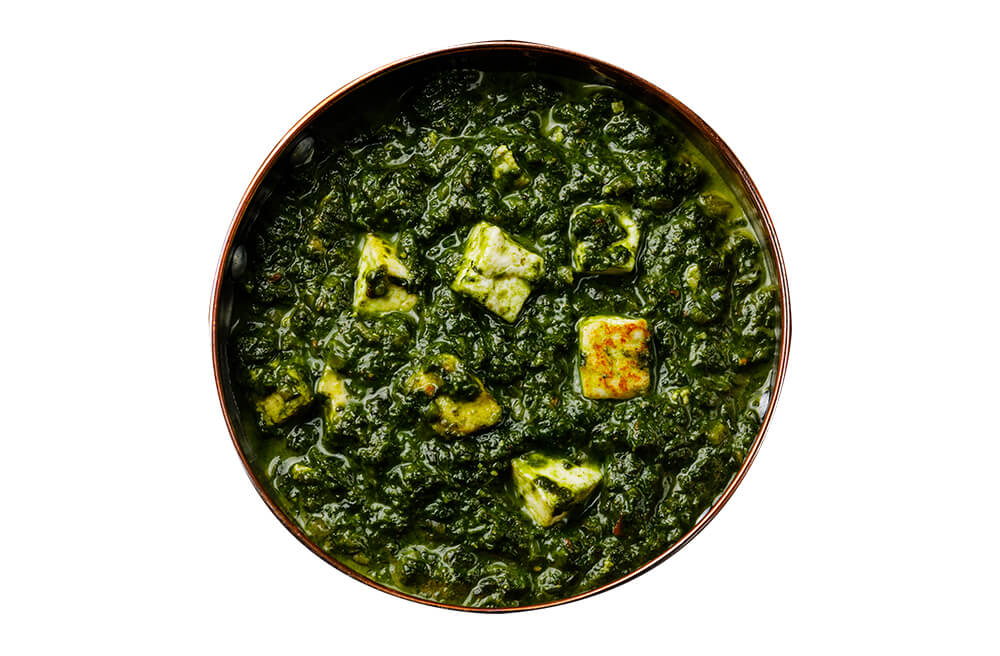
Palak Paneer is a flavorful, nutritious, and delicious dish. Start by blanching the spinach in a separate pot. In a pan, heat oil and sauté onions, cumin seeds, ginger, and garlic until fragrant. Blend the blanched spinach with green chillies, then add this puree to the pan and mix well. In another pan, lightly fry the paneer pieces on both sides. Add the paneer to the spinach mixture, finish with cream, and stir gently to combine.
3. Tawa Paneer
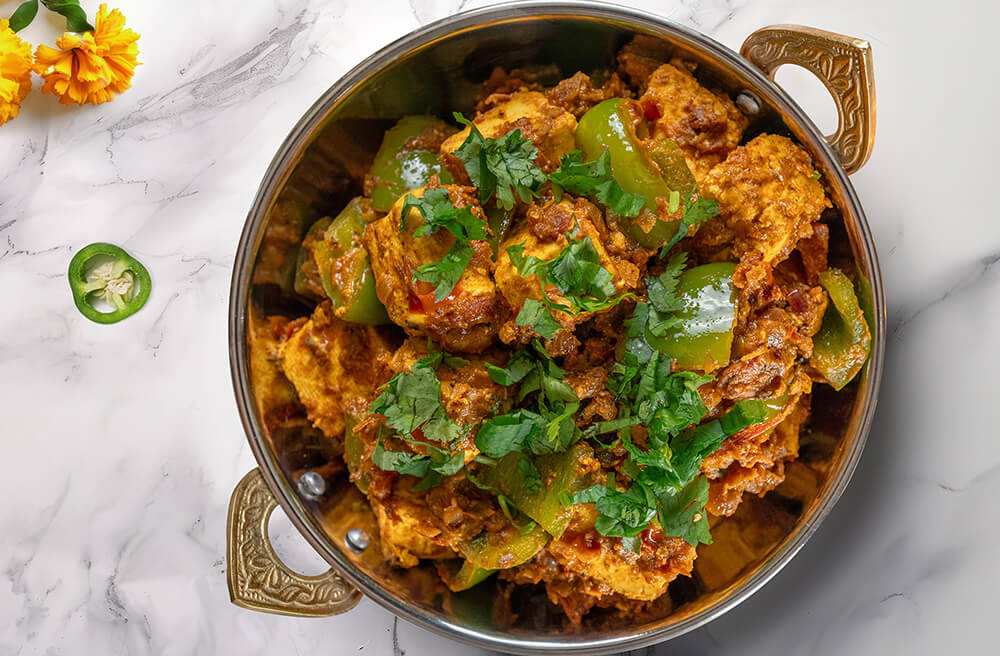
Tawa Paneer is a delicious, crowd-pleasing dish that comes together easily for festive occasions like Diwali or Dussehra. Marinate paneer in yogurt and add spices such as Kashmiri chilli powder and garam masala. In a heated pan, sauté onions, green chillies, tomatoes, bell peppers, and additional spices until the mixture forms a flavorful base.
Add the marinated paneer and cook for around 10 minutes. Garnish with cilantro and serve with your favorite Indian flatbread or rice.
4. Paneer Tikka Kababs
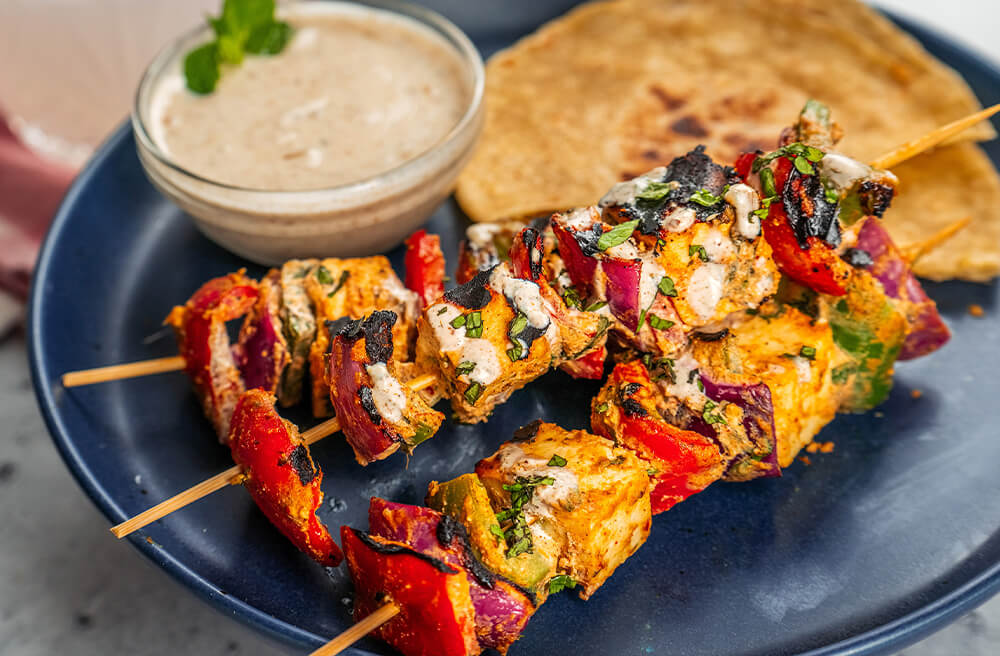
If you are searching for an easy vegetarian option for your next BBQ party, Paneer Tikka Kababs are the perfect choice. Paneer cubes, onions, and bell peppers are marinated in a flavorful blend of spices, ginger-garlic paste, and mustard oil, then threaded onto skewers and grilled for 5–7 minutes per side.
Serve these smoky kababs with your favorite chutney or dipping sauce. These charred vegetarian skewers are so irresistible and well-seasoned.
5. Malai Paneer

Malai Paneer is a rich, indulgent dish featuring pan-fried paneer slices simmered in an ultra-creamy sauce made with onions, cashews, and fresh malai. The combination of mild spices, malai, and dried methi leaves gives it a luxurious texture and depth of flavor.
Each bite truly melts in your mouth, offering a perfect balance of creaminess and spice.
6. Butter Paneer
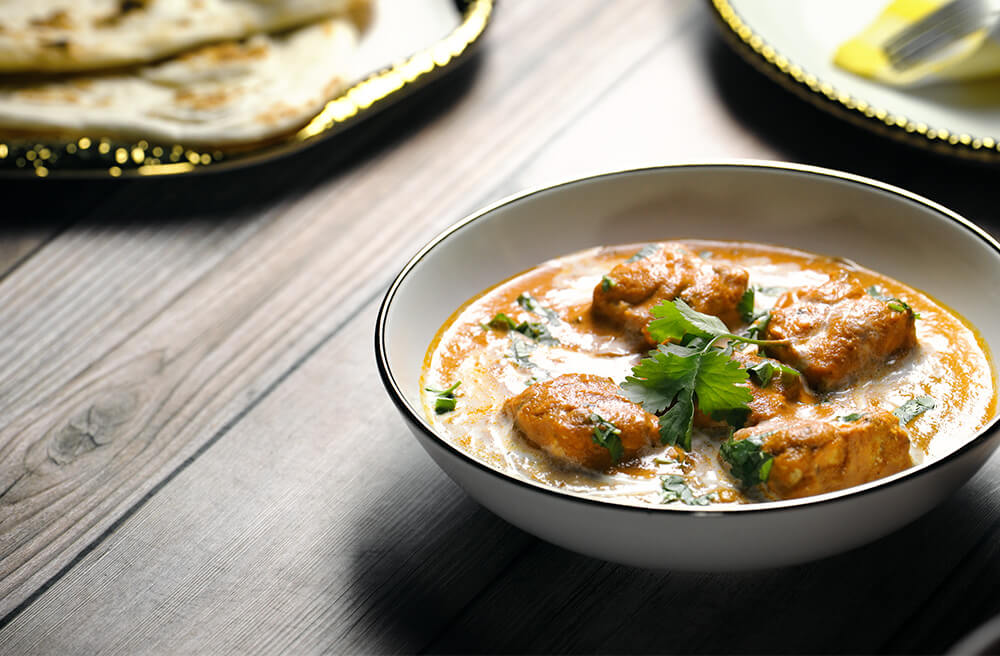
Looking for a vegetarian alternative to the beloved Butter Chicken (Chicken Makhani)? Meet Butter Paneer — the rich, creamy, and indulgent dish that delivers the same makhani magic without the meat.
The luscious gravy begins with unsalted butter and whole spices like bay leaf, cinnamon, cloves, and green cardamom. After sautéing the spices, add onions, cashews, tomatoes, and additional seasonings. Cook on medium heat for 10–15 minutes, stirring often, then allow the mixture to cool for 15–20 minutes before blending it into a smooth, velvety puree.
In a separate pan, heat butter and oil. Add red chili powder and ginger-garlic paste, followed by the blended gravy. Stir well to combine, then add heavy cream. Gently fold in the paneer and let it simmer. Finish with kasuri methi and butter.
Garnish with a drizzle of cream and fresh cilantro. Serve hot with fresh garlic naan.
7. Paneer Kalakand

The holiday season is upon us. Paneer Kalakand is a quick, effortless dessert that comes together in minutes before setting in the refrigerator. Made with simple pantry staples like milk powder, condensed milk, cardamom powder, and fresh paneer, this dessert turns into a rich, decadent delight.
8. Paneer Bread Pakodas

Paneer Bread Pakodas are sure to be the showstopper at your next tea party. This unique, eye-catching dish comes together in under 20 minutes and is made without the traditional besan coating. Crispy on the outside and filled with a spicy, creamy paneer mixture on the inside, it’s a divine twist on a beloved classic.
9. Schewan Paneer Puffs
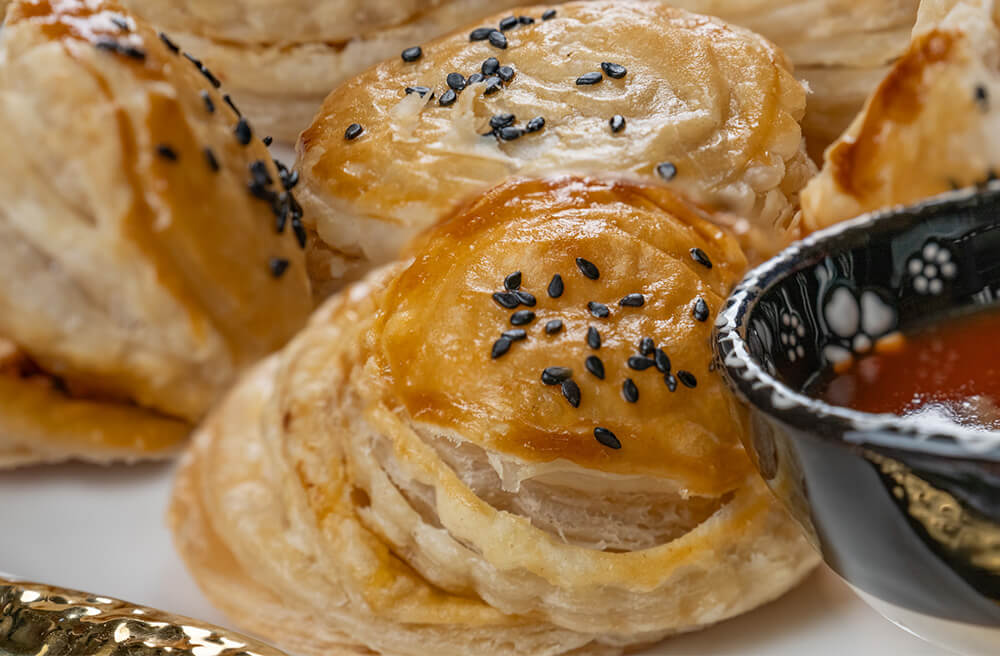
Schezwan Paneer Puff is a must-have appetizer. This fusion snack brings together bold Indo-Chinese flavors with buttery, flaky puff pastry. Each puff is filled with a delicious mix of paneer, bell peppers, aromatic spices, and Schezwan sauce, then baked to golden perfection. This savory goodness is packed with flavor in every bite.
Paneer’s versatility makes it a true star of Indian cuisine. From creamy gravies to grilled kababs, stuffed breads, and even indulgent desserts, paneer fits seamlessly into every course. We hope our in-house recipes inspire you to experiment, explore its many delicious possibilities and bring more vibrant, homemade flavors to your kitchen.
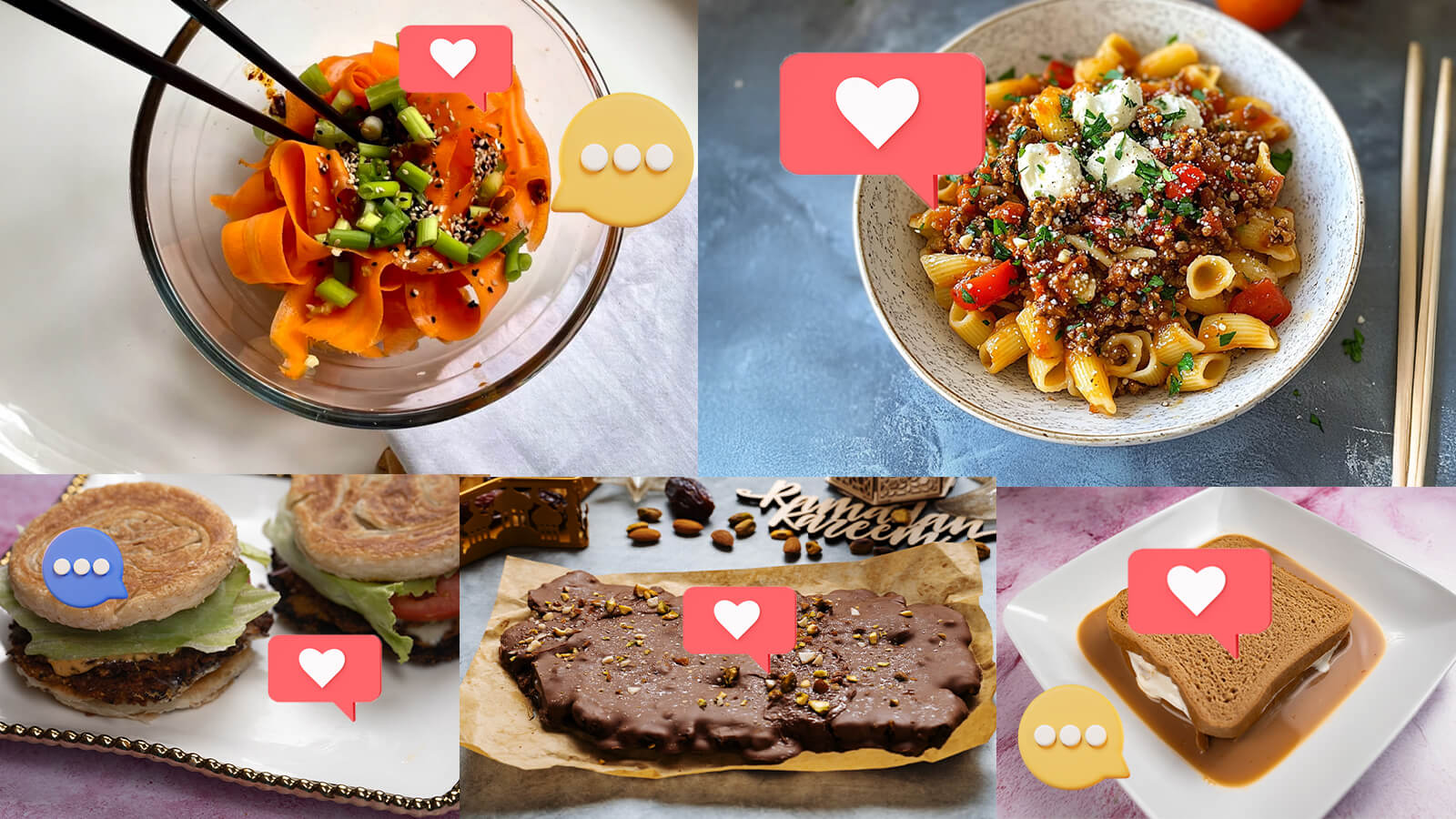
If there’s one thing that always brings people together worldwide, it’s the love for trying out viral recipes. Ever since the COVID-19 pandemic, these food trends have become the thing everyone’s obsessed with! Back in the day, there wasn’t really a platform to share the hype around a trending recipe — but post-COVID social media changed that completely.
Just as in the past few years, 2025 maintained the momentum with a mix of old favorites and brand-new creations. This year felt especially global, with innovative recipes emerging from Dubai, India, and Turkey — each adding its own unique twist to the viral food scene.
One standout trend worth mentioning is the “Dubai chocolate,” which became so viral that it inspired actual flavors for major chocolate and ice cream brands.
Now that we are headed towards a new year, let’s review the top viral recipes of 2025!
1. Viral Dubai Veggie Smash Burger

The viral Dubai Smash Burger reinvented the classic smashed burger by swapping out regular buns for buttery lacha parathas. The burger typically features either beef or chicken patties, melted cheese, caramelized onions, and a signature sauce, creating a bold East-meets-West fusion.
The trend first gained traction at Klay by Karak House in Dubai, and has since inspired burger joints and delis worldwide to experiment with their own versions. Patel Brothers recreated this viral favorite with an easier and quicker hack by using frozen parathas and veggie patties for an easy, vegetarian-friendly version of the smash sensation.
2. Chai Maska-The Viral Chai-Soaked Sandwich

Indians have long enjoyed the simple pleasure of dipping biscuits into chai. Traditionally, bun maska is eaten with chai on the side. The viral version, however, takes this comfort pairing to the next level by turning it into a chai-soaked cream sandwich that’s dunked directly into hot chai.
The result may be messy and far from picture-perfect, but fans describe it as pure indulgence — “a warm hug in every bite.”
3. Date Bark
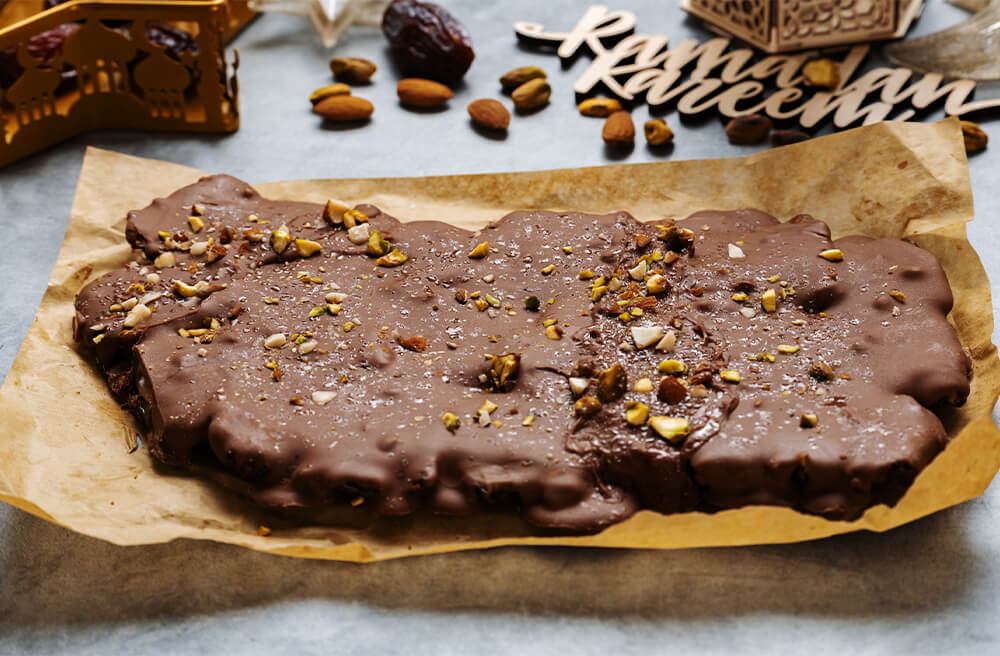
If you’ve got a sweet tooth but want something healthy and guilt-free, the viral Date Bark is the perfect treat to satisfy your cravings. This quick, no-bake dessert starts with soft Medjool dates pressed flat on parchment paper. A layer of creamy peanut butter is spread on top, followed by a drizzle of melted chocolate.
Finally, it’s topped with chopped nuts, sea salt, and dried rose petals, then chilled in the freezer for about an hour. The result is a crunchy, chewy, and chocolatey delight that tastes surprisingly like a homemade Snickers bar.
4. Viral Anna Paul’s Turkish Pasta
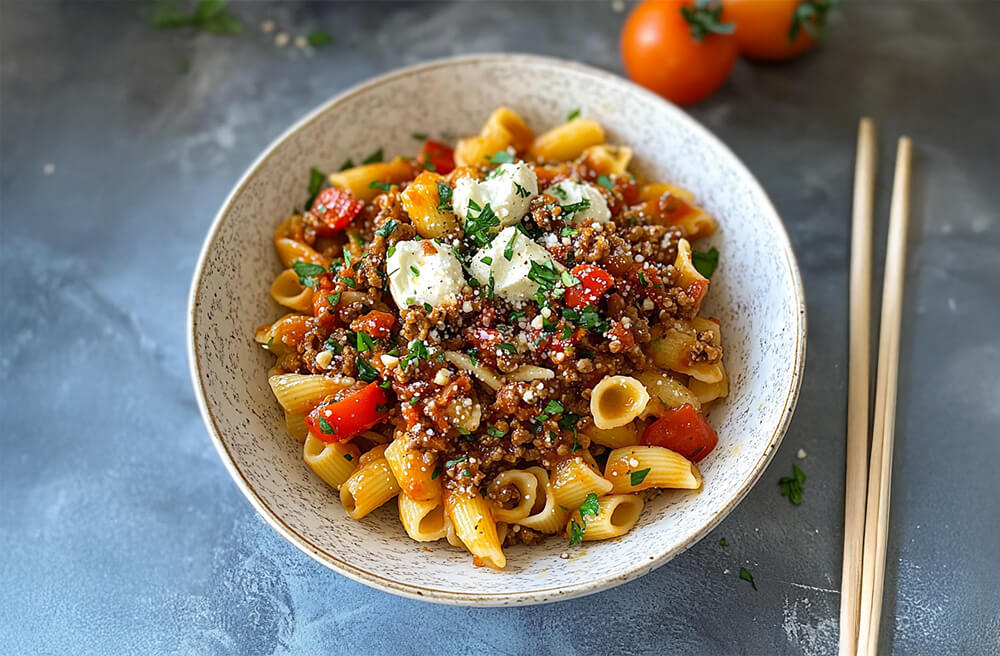
This viral Turkish Pasta, made famous by TikTok creator Anna Paul, is a deconstructed take on the traditional Turkish dumpling dish, Mantı. Instead of dumplings, it uses pasta as the base.
To make it, ground meat is cooked with onion, tomato paste, and spices like sweet paprika, curry powder, onion powder, and salt until fully browned — no oil is needed, as the meat naturally releases its own.
In a separate pan, butter is infused with sweet paprika to create a rich, aromatic drizzle. The dish is then layered: first pasta, then a generous amount of garlic Greek yogurt, followed by the spiced meat, and finally the paprika butter sauce. Finally, it is topped with fresh parsley and chopped tomatoes.
For a vegetarian-friendly twist, swap the ground meat with crumbled tofu. It is equally rich in flavor and delicious.
5. Viral Carrot Ribbon Salad
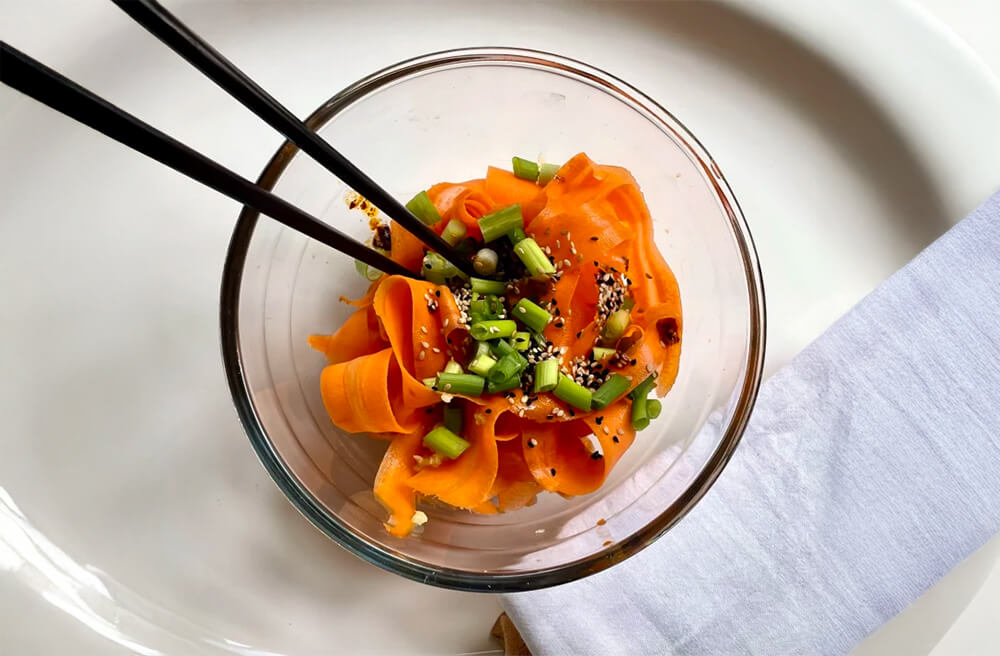
Last year, TikTok went crazy for Logan Moffitt’s viral cucumber salad — and this year, the spotlight is on Cassie Yeung’s viral carrot ribbon salad. This quick recipe comes together in minutes: shred your carrots into thin ribbons and then toss them with green onions, grated garlic, soy sauce, rice wine vinegar, sesame oil, and chili crisp. Gently mix by hand.
The result is a fresh, spicy, and nutritious salad that’s as good for you as it looks. Since carrots are rich in antioxidants and great for skin health, Cassie calls it “eating your skincare.”
Like past years, 2025 has also proven that food trends are all about creative reinvention. This year’s viral recipes blend comfort, nostalgia, and innovation — taking traditional dishes and giving them bold, modern twists, making them crave-worthy.
Each dish tells a story, connects people across globally, and reminds us that the simplest ideas can become global sensations.
Here’s to more being innovative and experimenting in the kitchen — because the next viral recipe might just be one you create.
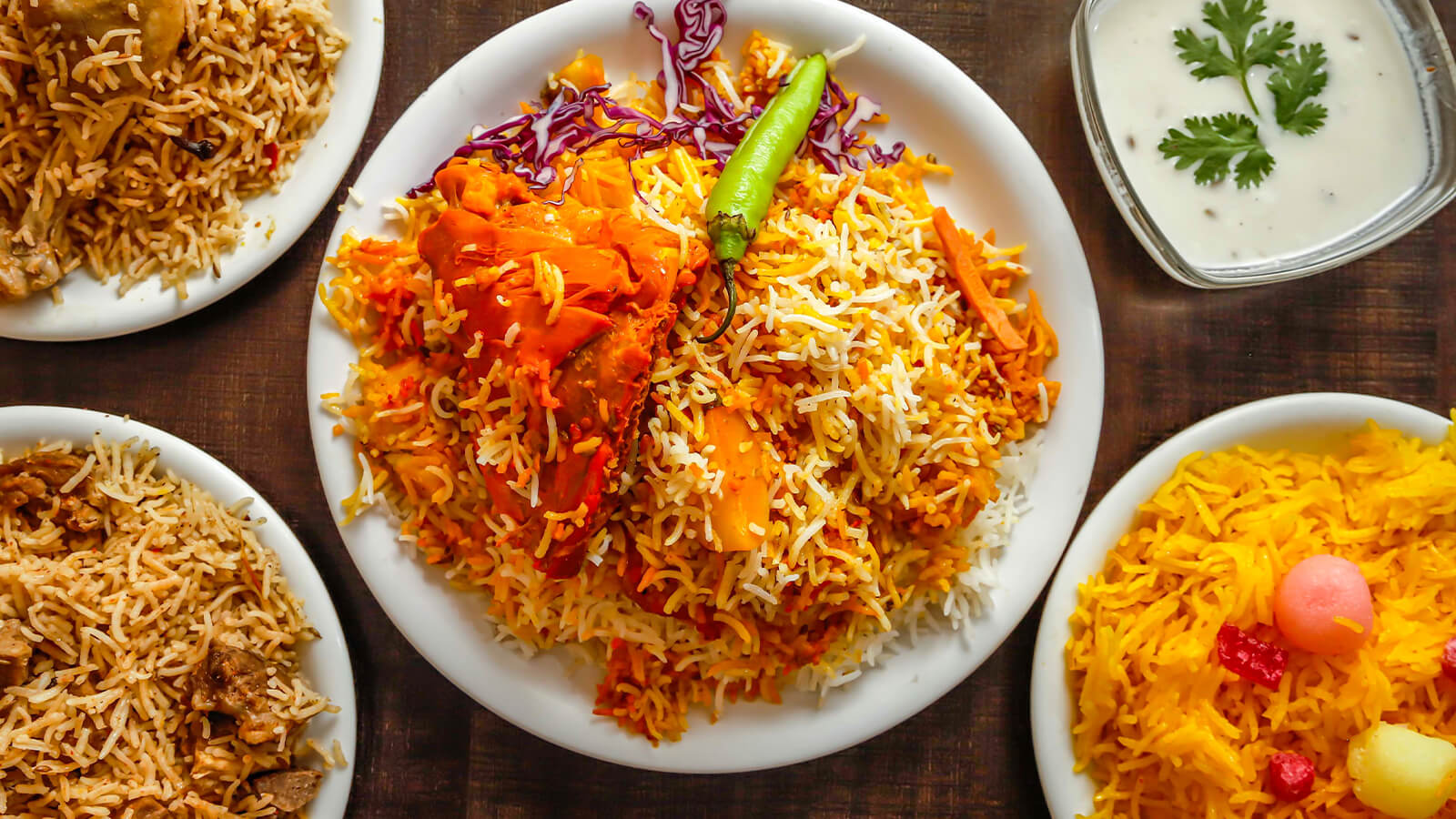
Every cuisine has that one dish everyone claims their family makes best — a dish that carries stories, traditions, and a little friendly rivalry. In Indian cuisine, that dish is biryani.
From royal kitchens to family feasts, biryani has traveled through centuries, gathering flavors, spices, and styles along the way. With every region adding its own twist and unique ingredients, one thing’s for sure — not all biryanis are created equal.
Biryani is derived from the Persian word Birian, which translates to ‘fried before cooking’ and Birinj, the Persian word for rice. Legend has it that it was brought over to India by Persian travelers and Mughal emperors centuries ago. Over the centuries, the process of making this popular dish has been heavily influenced by the Mughals.
Biryani is more than just a meal—it’s a fragrant, layered masterpiece that brings together rice, tender pieces of different types of meat or hearty vegetables, and a medley of rich spices.
While the ingredients may vary by region, most biryanis include onions, tomatoes, fresh herbs like mint and cilantro, and a mix of key spices such as turmeric, red chili powder, coriander powder, cumin, garam masala, cardamom, cloves, and bay leaves.
Biryani is traditionally prepared in two main ways. The first is the pakki (cooked) biryani, where the meat or vegetable gravy and rice are cooked separately before being layered and given a short dum (slow steam). Pakki biryani is easier and quicker to prepare.
The second method is kachi (raw) biryani, in which layers of raw marinated meat are combined with partially cooked rice and then slow-cooked using the classic dum pukht technique for about an hour, until the meat becomes tender and flavorful. The kachi method is more time-intensive.
Let’s go over some of the most popular types of biryani:
1. Hyderabadi Biryani

Having its origins in the royal kitchens of the Nizams of Hyderabad, Hyderabadi Biryani is one of India's most iconic and indulgent dishes. The preparation begins with marinating the meat in a flavorful mix of ginger-garlic paste, yogurt, tomatoes, fried onions, and aromatic spices such as chili powder, turmeric, garam masala, cardamom, cinnamon, cloves, and cumin. This marinated meat is then left to rest for several hours or overnight.
Next, the marinated meat is layered with partially cooked basmati rice, fried onions, fresh mint, cilantro, saffron-infused milk, and green chilies. The pot is sealed and slow-cooked (dum style) until the meat becomes tender and the rice absorbs all the rich, fragrant flavors. The result is a beautifully layered, aromatic biryani that’s truly worth the effort. Hyderabadi is commonly served with mirchi ka salan, a creamy and tangy curry.
2. Lucknowi (Awadhi) Biryani

Lucknowi Biryani, also known as Awadhi Biryani, originates from the royal kitchens of the Nawabs of Awadh. It is prepared using the pakki biryani method. This biryani features a rich use of whole spices such as cinnamon, green and black cardamom, caraway seeds, and cloves, similar to the spices infused into a yakhni (broth).
Famous for its delicate seasoning and perfectly balanced flavor, Lucknowi Biryani is milder and less spicy compared to Hyderabadi Biryani.
3. Bombay Biryani

Coming from Bombay (Mumbai), India, Bombay Biryani is known for its distinct blend of sweet, spicy, and tangy flavors. Prepared using the pakki biryani method, it features unique ingredients such as dried plums, fried potatoes, and a hint of rose water.
Bombay Biryani can be made in both vegetarian and non-vegetarian versions and is enjoyed everywhere—from bustling street food corners to fine-dining restaurants.
4. Sindhi Biryani

Developed in the regions of Sindh, Pakistan, Sindhi Biryani shares a similar preparation style to Bombay Biryani and is a beloved dish across Pakistan. The flavorful gravy, typically made with mutton or chicken, combines tangy yogurt, fresh tomatoes, mint, and green chilies for a rich and aromatic base.
Distinguished for its spicy and bold flavor profile, Sindhi Biryani stands out for its vibrant taste, perfectly balancing heat, tanginess, and the aroma of fresh herbs.
5. Malabar Biryani

Malabar Biryani, also known as Thalassery Biryani, is a signature dish from the Malabar region of Kerala, India. What sets it apart from other biryanis is its use of short-grained Jeerakasala or Kaima rice. This biryani is prepared using the pakki biryani method. Malabar Biryani is often made with chicken, mutton, or fresh coastal seafood such as fish or prawns.
This biryani is prepared with ghee and has cashews, raisins, and aromatic herbs like mint and cilantro, giving it a rich aroma and a perfectly balanced, mildly spiced flavor.
6. Kolkata Biryani

Kolkata Biryani originated in the city of Kolkata, West Bengal, India. Inspired by the Lucknowi style of biryani, it is prepared using the pakki biryani method and is known for its milder, more delicate flavor compared to Hyderabadi Biryani.
What makes this biryani unique is the addition of tender potatoes and boiled eggs, which have become its signature elements.
7. Dindigul Biryani

Dindigul Biryani originates from the Dindigul district in Tamil Nadu, India. It features a flavorful blend of curd (yogurt), lemon juice, freshly ground spices, and short-grained seeraga samba rice. This biryani offers a perfect balance of tangy and spicy.
Dindigul biryani is accompanied by dalcha, a lentil-based curry made with tamarind and various spices.
Biryani is accompanied by condiments such as mint chutney raita, cucumber raita, boondi raita, or pickles (achar). Biryani remains a showstopper on its own — a dish with a heavy flavor profile. Biiryani represents a journey across India’s diverse culinary landscape, blending history, tradition, and regional culture.
As a centerpiece of every celebration, biryani is always present during weddings, birthdays, family gatherings, and religious festivities. Biryani is truly cherished everywhere; it stands as a symbol of festivity and comfort. It’s a timeless dish that transcends borders and brings people together through the shared joy of food.
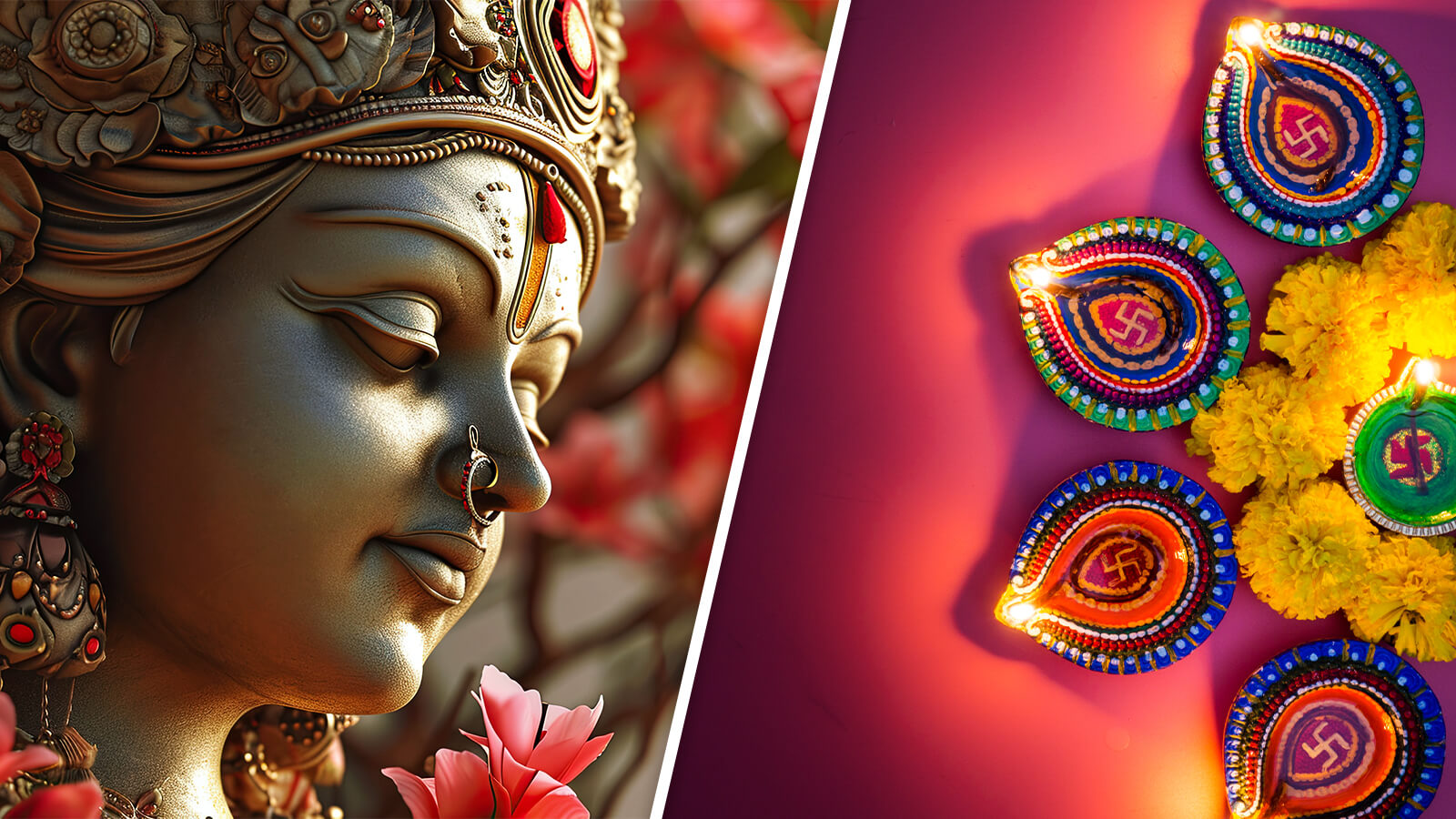
The Indian holiday season has arrived — and it begins long before the rest of the world dives into celebrations!
Today marks the beginning of Navratri, a festival celebrated with great devotion and grandeur by Hindus worldwide. Navratri is a Hindu festival that lasts nine nights and ten days, followed by Dussehra, and culminating about a month later with the grand celebration of the Indian New Year—Diwali.
Navratri, which means “nine nights,” is a vibrant festival dedicated to the worship of Goddess Durga in all of her divine forms. Throughout these nine nights and ten days, devotees honor the goddess with prayers, rituals, and traditional dances. In 2025, Navratri will be celebrated from September 22 to October 1. Each day is marked by a unique color, with every color carrying its own symbolic significance and spiritual meaning.
Starting with Day 1, which represents the color yellow and the worship of the goddess Shailaputri. Shailaputri, known as the daughter of the mountain, symbolizes creation. Day 2 is the color green, and the worship of the goddess Brahmacharini represents devotion to worship. Day 3 is grey, and the worship of the goddess Chandraghanta symbolizes balance. Day 4 is orange, and the worship of the goddess Kushmanda represents the growth of life emerging from darkness.
Day 5 is the color white, and the worship of the goddess Skandamata emphasizes the protective nature of motherhood. Day 6 is red, and the worship of the goddess Katyayani ignites the warrior spirit to stand against evil. Day 7 is royal blue, and the worship of the goddess Kalaratri represents protection. Day 8 is the color pink, and the worship of the goddess Mahagauri represents purity. Lastly, Day 9 is purple, and the worship of the goddess Siddhidatri signifies devotion, drive, and prosperity.
Navratri is celebrated by keeping a vrat (fast) and following a sattvic diet. Foods such as sabudana chutney bombs, fruit chaat, vrat pakora, and samak rice kheer are commonly consumed. Ingredients such as onions, garlic, and certain spices are avoided.
During this sacred period, devotees perform daily puja, chant mantras, and offer special foods to Goddess Durga, including ghee, fruits such as apples and bananas, kheer, coconut, and sesame seeds. Homes and temples are beautifully decorated with lights, colorful lamps, and intricate rangoli designs.
The celebration concludes on the 10th day, known as Dussehra (Vijayadashami), which will be observed on October 2, 2025. This day marks the triumph of good over evil.
Following Dussehra, the festive spirit continues for the next few weeks as people prepare for Diwali, the biggest celebration of the year. Diwali will be celebrated on October 20, 2025. and is celebrated for five days. Known as the Festival of Lights, Diwali symbolizes the triumph of light over darkness and, in some regions of India, also marks the start of the New Year and a time for new beginnings.
Navratri is more than a festival—it is a sacred journey of soul cleansing, awakening of spirituality, and devotion. Over nine nights, family and friends come together performing pujas and traditional dances like Garba and Dandiya; each day of Navratri carries a special meaning. Navratri, Dussehra, and Diwali together create a month-long season of celebration, inspiring Hindus worldwide to embrace faith, unity, and share values and traditions.
Patel Brothers wishes you and your family a Shubh and joyful holiday season ahead!

Ghee is a cornerstone of Indian cuisine and, in recent years, has gained global recognition as a superfood in the wellness community. Now widely available in supermarkets around the world and featured in countless online recipes, ghee holds a place in Indian cooking much like olive oil does in Mediterranean cuisine—used in everything from breakfast dishes to desserts.
Renowned for its versatility, ghee can be used for cooking, sautéing, frying, and tempering spices. It has been a part of Indian life for centuries, valued not only for its culinary uses but also for its role in religious traditions. Ghee is simply clarified butter—rich in flavor, tradition, and cultural significance.
Homemade ghee is a true labor of love, and making it in an Instant Pot is simple and efficient. Start with unsalted butter sticks, placing them in the pot over low heat. As the butter melts, it naturally separates into three layers: a foamy top, a clear golden liquid in the middle, and milk solids at the bottom. Once fully melted, the milk solids will turn golden brown and release a rich, nutty aroma. Strain the liquid and transfer it to an airtight container. Ghee has a long shelf life, and it can be stored for several months.
The benefits of ghee surpass those of seed oils. In Ayurveda, ghee is regarded as a “sattvic” food, valued for promoting gut health.
Rich in vitamins A, D, E, and K, as well as omega-3 fatty acids, ghee offers notable nutritional benefits. It has a high smoke point, making it ideal for sautéing and frying without burning easily—unlike many cooking oils. Ghee is lactose-friendly.
In Indian food, ghee is found everywhere From flaky parathas, indulgent halwa puri, fragrant biryanis, takda dals, sabzis, creamy butter chicken, and scrumptious paneer masala all owed part of their magic to it. When it comes to Indian sweets—whether it’s the melt-in-your-mouth gulab jamun, jalebi, halwas, or ladoos—ghee is the secret to that delicious taste.
Additionally, a dollop of ghee can elevate any meal with rich flavor. From comforting khichdi to freshly made rotis and parathas, it adds softness, aroma, and a touch of indulgence. For strength and recovery, wholesome snacks like gond ke ladoo and panjeeri are prepred with ghee. These nourishing, immunity-boosting dishes are an essential part of postpartum care for new Indian mothers.
Beyond the kitchen, ghee holds deep cultural and religious significance in Hinduism. It is used to fuel sacred fires (Agni) during Vedic rituals, and ghee lamps (deepams) are lit in temples to symbolize purity and the end of darkness. Ghee is also a key ingredient in prasad (sacred offerings), such as ladoos and halwas.
Ghee in moderation is highly recommended. Ghee is often referred to as “liquid gold” and rightfully so, ghee is a powerhouse ingredient. From making Indian cuisine more richer and flavorful to being a key component in religious rituals, ghee has had a strong presence in Indian kitchens and culture for centuries. Ghee continues to bridge generations, reminding us that Indian cuisine is not only delicious but carry element of tradition, identity, and love passed down through generations.
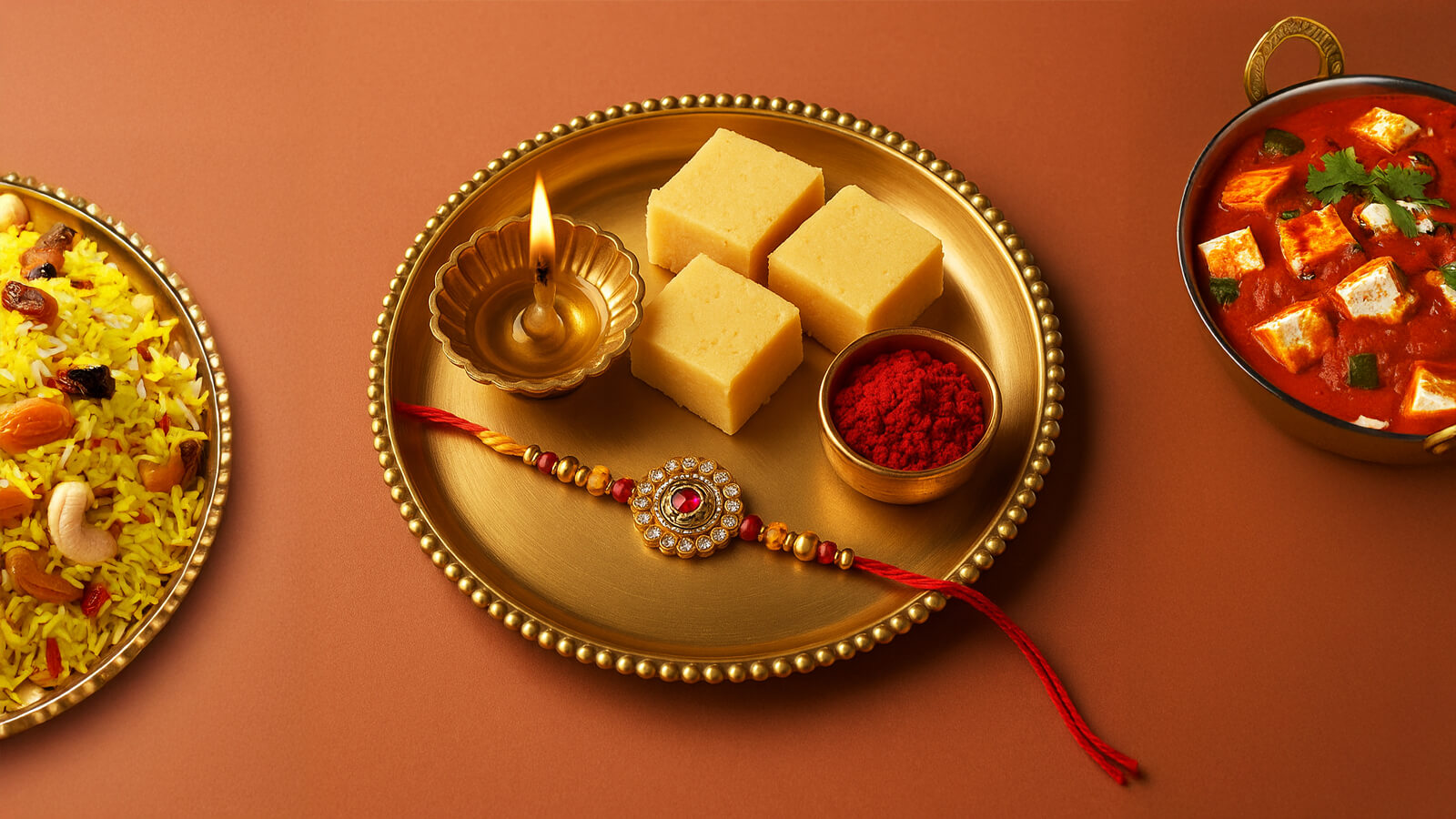
Indian culture is renowned for its vibrant array of festivals—Holi, for example, marks the arrival of spring and the renewal of life. Raksha Bandhan is another holiday that holds a special place in its own right, as it honors the timeless bond between siblings, symbolizing love, protection, and mutual respect. What truly sets this holiday apart is its inclusivity—you don’t need to be related by blood to participate. Friends, mentors, neighbors, and anyone with whom you share a deep connection can exchange rakhis, extending their spirit of care and commitment beyond traditional family ties.
Raksha Bandhan is celebrated with a blend of devotional rituals, festive foods, gift-giving, and large family gatherings. In India, it is common for sisters to travel to their maternal homes to celebrate this occasion with their brothers.
Among the many origin legends of Raksha Bandhan, one cherished tale centers on the river-goddess Yamuna and her brother Yama, lord of death and justice. On the full-moon day of Shravana, Yamuna gently tied a simple cotton thread—a rakhi—around Yama’s wrist while offering a heartfelt prayer for his health and long life. Moved by her devotion, Yama promised to take care of his sister. Ever since, the rakhi has symbolized not only a brother’s protective vow but also a sister’s loving plea for her sibling’s well-being.
Translated as the “bond of protection,” Raksha Bandhan is one of India’s most celebrated holidays. Families dress in new clothes and gather for the ritual, centering around a beautifully arranged rakhi thali. This ceremonial plate typically holds a colorful rakhi thread, a lit diya (lamp), turmeric-and-rice tilak, and an assortment of mithai (sweets).
Raksha Bandhan is observed on the full-moon (Purnima) of the Hindu month of Shravana—in 2025, this falls on Saturday, August 9, with the auspicious tying window (Muhurat) running from early morning until early afternoon.
During the puja, sisters apply the tilak to their brothers’ foreheads, tie the rakhi—a vibrant thread symbolizing their prayers for their good health, safety, and long life. In return, brothers give their sisters gifts ranging from money and clothing to gold jewelry, promising them lifelong protection and love.
No Hindu celebration feels complete without a feast, and Raksha Bandhan is no exception. After the rituals are completed, families dig into a festive thali brimming with carefully prepared delicacies such as aromatic biryani, spicy chole bhature, rich paneer masala, crispy pakoras, flaky samosas, and stuffed kachoris. Dessert is equally lavish, featuring classic mithai such as gulab jamun, ladoos, kaju katli, and barfi, while refreshing drinks like chilled thandai and creamy lassi round out the spread.
Raksha Bandhan is much more than a ceremony of tying rakhi—it’s a forever affirmation of the unique bond between siblings and a heartfelt promise. From the simple act of tying a rakhi to the shared laughter over family feasts, each gesture speaks of protection and gratitude. As you tie that rakhi this year on your loved ones, take a moment to honor the promise it carries: to stand by one another through all of the good and bad.
Celebrate this joyous occasion with your loved ones by entering our exclusive giveaway for a chance to win an incredible prize.
Here’s to honoring the bonds that tie us together—today and always. Happy Raksha Bandhan from our family to yours.

India is home to one of the most flavorful and diverse cuisines in the world. Known for its rich use of both dry and fresh ingredients, Indian cooking is boldly seasoned and full of depth. Unlike many other global cuisines, Indian dishes are characterized by a layering of spices that bring out complex, well-balanced flavors. Indian cuisine is incomplete without mirch—the fiery ingredient that brings dishes to life. With its distinctive flavor and heat, mirch possesses the superpower to elevate a dish and completely transform its taste, making it a must-have ingredient.
Peppers, in particular, also play a key role in Indian cuisine. They come in a variety of colors, shapes, and heat levels—and are used in different ways across Indian cuisine. Some peppers are cooked into the dish to build heat and aroma, while others are added as a garnish to enhance both presentation and flavor. Each variety—whether stuffed, pickled, ground, or simply tempered in hot oil—adds a distinct shade of heat, color, and aroma that defines the character of countless Indian dishes.
While peppers are often associated with spiciness, their role in Indian cuisine goes far beyond heat. They add depth, color, and complexity, bringing essential character and vibrancy to countless traditional dishes. Let’s explore some of the most popular types of peppers used in Indian cuisine.
1. Red Chili Pepper

Red dried whole chilies are a staple in Indian cuisine, known for their heat, aroma, and ability to infuse deep flavor into dishes. One of the most versatile forms of chili, they are used whole, ground into powder, or crushed into flakes—each offering a different intensity and texture. India is one of the world’s largest producers and exporters of red chili peppers, and these fiery ingredients can be found in nearly every Indian dish, from tadkas and curries to marinades and chutneys.
2. Kashmiri Chili Pepper

Kashmiri chili pepper originates from the Kashmir region of India and is most commonly used in its powdered form. It is renowned for its vibrant red color and mild, subtle flavor, making it a popular choice for adding color without overwhelming heat. Compared to regular red chili pepper, Kashmiri chili is significantly lower on the heat scale. It is used in dishes like Rogan Josh, Butter Chicken, and Chicken Tikka Masala.
3. Indian Green Chili (Jwala Chili)

Indian green chili, known as Hari Mirch in Hindi, is one of the most popular and widely used chilies in Indian cuisine. Known for its spicy and pungent flavor, it adds heat and depth to a variety of dishes. Hari Mirch is used in dal tadka, curries, sabzis, chutneys, and even as a garnish to enhance both flavor and presentation. A good alternative for Indian green chili is serrano peppers.
4. Thai Chili Pepper

Thai chili pepper, also known as Bird’s Eye chili, is a small, slender green chili known for its intense heat. While not native to India, it is commonly used in Indo-fusion dishes such as Chili Paneer and Schezwan Chicken, where bold, spicy flavors are key. Due to its extreme spiciness, Thai chili is best used in moderation and often paired with cooling ingredients like yogurt or cream to balance the heat.
5. Bhavnagri Chili

Bhavnagari chili is a large, curvy, and light green pepper known for its mild heat. It is commonly featured in Indian dishes like Bharwa Mirch (stuffed peppers), where the chilies are slit lengthwise and filled with a flavorful stuffing of paneer, potatoes, and aromatic spices, then shallow-fried to perfection. Bhavnagari chili is also used to make mirch ka achar (pickles). With its gentle spice level, Bhavnagari chili is an excellent choice for those who want chili flavor in their food without intense heat.
6. Bell Peppers

Bell peppers are big and circular and come in vibrant colors such as yellow, green, and red. They are also known as capsicum or shimla mirch. With very low heat, they are perfect for those who prefer flavor without the spice. Their crisp texture adds a pleasant crunch to a variety of Indian dishes.
Visually striking and highly versatile, bell peppers enhance both the taste and appearance of meals. They are used in salads and are added to BBQ skewers and roasted alongside proteins. Some popular sabzis made with bell peppers include Aloo Shimla Mirch and Kadai Paneer. In Indo-Chinese cuisine, bell peppers are key to dishes such as hakka noodles, gobi manchurian, and vegetable fried rice, where they contribute both color and texture.
7. Ghost Peppers

Ghost pepper, also known as Bhut Jolokia, was once recognized as the hottest chili pepper in the world. Native to Northeast India, it is popular in states like Assam, Nagaland, and Manipur. It is loved by all chili enthusiasts. This pepper is known for its intense heat and distinctive smoky flavor.
Ghost peppers are used in a variety of fiery preparations, including chutneys, achar (pickles), spice blends, hot sauces, and chili-infused oils. Just a small amount is enough to bring bold flavor and serious heat to any dish.
From the smoky depths of dried red chilies to the vibrant crunch of fresh green ones, mirch is more than just a source of heat in Indian cuisine—it's truly a cultural icon. Each region in India uses chilies in its distinct way, reflecting regional taste and tradition.
So the next time you reach for a chili—whole, powdered, fresh, or dried—know that you're adding more than spice. You're stirring centuries of culinary heritage into your food.

Indian cuisine is known for its vibrant flavors, but creating those delicious dishes requires unique kitchen essentials beyond the typical pots, pans, and spoons commonly found in most kitchens. Authentic Indian cooking relies on specialized utensils that bring traditional recipes to life. Indian kitchens go far beyond the spice jars you see in cooking videos—they feature a distinct range of cookware and servingware designed to simplify cooking.
These essential tools are staples in every Indian household, integral to traditional culinary techniques. We've compiled a list of Indian kitchen tools to help you effortlessly create nourishing, homemade dishes that replace your favorite take-out meal.
1. Masala Dabba (Spice Box)
.jpg)
Masala Dhaba is a round stainless steel box with a lid, containing separate bowls and small spoons for scooping. Masala dabba’s basic function is to store and organize Indian spices in one place. Some staple spices usually placed in the masala dabba needed for everyday cooking include turmeric, red chili powder, coriander powder (dhaniya powder), cumin seeds, elaichi (cardamom), and garam masala.
2. Pateela

Pateela is a deep, round-shaped, and wide-mouthed pot made of stainless steel that comes in various sizes. Pateela is used to make the majority of Indian food. Pateela is the most versatile pot in Indian cooking as it's used for making chai, boiling milk, preparing curries, rice, and stews, even baking without an oven. Its design allows for even heat distribution, making it ideal for slow-cooked dishes.
3. Karahi

A karahi—also known as a kadai is a deep, round-bottomed cooking pot traditionally crafted from stainless steel, aluminum, copper, or cast iron. Its wide mouth and high sides make it ideal for a variety of cooking techniques, such as deep-frying, stir-frying, and sautéing.
It is commonly used to prepare flavorful dishes like puris, pakoras, samosas, hakka noodles, and the iconic chicken karahi. Its design allows for even heat distribution, making it especially effective for cooking at high temperatures.
4. Belan and Chakla

The belan (rolling pin) and chakla (flat rolling board) are must-have tools for shaping Indian flatbreads like rotis, parathas, and puris before cooking. Made from lightweight wood, the belan is slimmer and lighter than a typical baking rolling pin. These uniquely Indian tools help roll out dough evenly, ensuring flatbreads come out thin, round, and perfectly shaped every time.
5. Tawa

A tawa is a flat, round, shallow pan. After rotis or parathas are rolled out, they are placed on the hot tawa to cook. In addition to flatbreads, the tawa is also used to prepare popular street foods like pav bhaji and bun kabab.
6. Tong
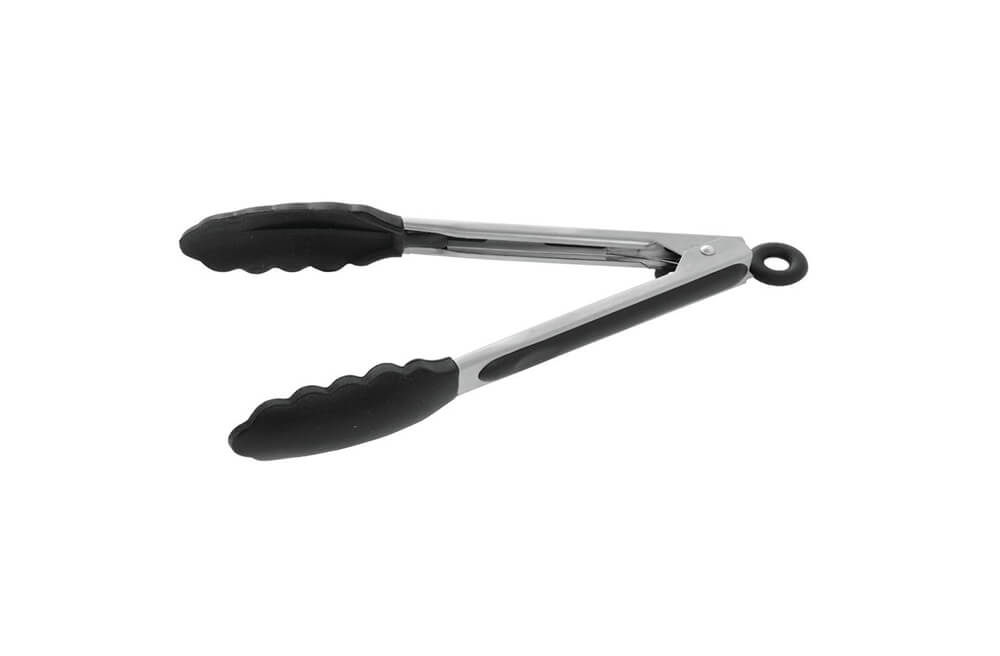
Tongs, traditionally known as chimta, were originally made from iron, though stainless steel versions are now more commonly used. They are essential for flipping rotis or parathas on a tawa and for holding them directly over an open flame to get that perfect char. Tongs are also useful for grilling or roasting vegetables and meats over open heat.
7. Mortar and Pestle

A mortar is a round bowl typically made from materials like wood, marble, or metal, paired with a pestle—a matching heavy, club-shaped tool used for crushing and grinding. They have been known as a traditional grinder that has been an integral part of Indian cooking for centuries.
Mortar and pestle are commonly used to grind freshly roasted spices into powders or pastes, prepare spice blends like garam masala, and make flavorful pastes such as ginger-garlic or various chutneys including mint, garlic, peanut, and coconut. This method enhances the taste by releasing the natural oils and aromas of the ingredients.
8. Idli Steamer

Idli steamer is a stack of stainless steel or aluminum trays with a separate round mold for batter. The trays are placed inside a larger steaming pot with a tight lid. Besides Idli, some of the other things that you can make in the steamer are dhokla, steamed eggs, rice cake, khaman, and steamed dumplings.
9. Jhaara

A jhaara is a flat, round utensil made of stainless steel used for lifting and draining fried foods from hot oil. It’s especially handy when removing items from a kadai or deep frying pan. The long handle helps keep your hands safely away from splattering oil. It’s commonly used while deep-frying snacks like puris, pakoras, vadas, and samosas.
10. Instant Pot or Pressure Cooker

The Instant Pot or traditional pressure cooker has become an essential kitchen appliance, known for significantly reducing cooking time and making cooking more efficient. While pressure cookers have been a staple in Indian kitchens for decades, the Instant Pot has gained popularity in recent years for offering similar functionality with added features. From yogurt, curries, dals to boiled rice and even cheesecake, a wide range of dishes can be effortlessly prepared in it. One of its biggest advantages is that it requires minimal supervision during cooking.
Equipping your kitchen with these essential Indian cooking tools transforms the way you experience homemade Indian cuisine. It helps you understand traditional cooking techniques passed down through generations. Mastering Indian cuisine goes beyond learning recipes—it starts with having the right tools, and with the tools listed above, you can confidently recreate delicious Indian recipes.

Turmeric (Haldi) is one of the most iconic, cherished, and essential spices in Indian cuisine. Haldi has earned the title “India’s timeless golden elixir " for its enduring value. ” In the past century, Haldi has played a pivotal role in shaping food, beauty, and health.
Revered for centuries in Indian culture, haldi has gained widespread popularity across the globe in recent decades. Today, chefs worldwide consider haldi a must-have in their kitchens. It's a cornerstone of Indian cooking, it's hard to imagine many dishes without its vibrant color and distinctive flavor. Just a pinch of haldi can enhance the taste and bring a beautiful golden hue to any dish, making it both a flavorful spice and a natural coloring agent.
Scientifically known as Curcuma longa, turmeric is a close relative of ginger. It's harvested from the rhizome of a native Asian plant, which is boiled, dried, and ground into a bright golden-yellow powder. With its earthy aroma and warm, slightly bitter, peppery flavor, haldi is a key component of curry powders and spice blends.
Another type of turmeric is white turmeric, also known as wild turmeric, zedoary, or kasturi manjal. It has a yellowish-white interior and a brownish outer skin. Unlike yellow turmeric, white turmeric doesn’t leave behind any stains. It has a very distinctive smell.
White turmeric holds an important place in Ayurvedic medicine, a holistic wellness system rooted in India. It is valued for its anti-inflammatory, digestive, immune-boosting, healing, and detoxifying benefits.
While most commonly used in powdered form, yellow turmeric can also be used freshly grated or sliced, much like ginger, and added to curries, salads, stews, and marinades. From hearty meat dishes to nourishing vegetarian and vegan recipes, haldi plays a crucial role in Indian cuisine. We have rounded up some of our favorite haldi dishes:
1. Haldi Dhood

Haldi Dhood, also known as Golden Milk, is often used as an alternative remedy to boost immunity. With its anti-oxidation and anti-inflammatory properties, Haldi Dhood Milk is beneficial during the winter season because of its use in treating colds.
Haldi Dhood can be prepared within minutes with only a few ingredients, such as milk, turmeric, ginger, cinnamon powder, and ground black pepper. Haldi Dhood has gained a cult following and has become a global phenomenon around cafes.
2. Turmeric Rice

Turmeric Rice is a comforting dish that pairs perfectly with curries, kebabs, and lentils. It is infused with aromatic spices such as turmeric, bay leaves, cloves, and cumin. Veggies such as peas, carrots, or potatoes can be added to it. It is a super-easy recipe that is prepared in under 30 minutes. Turmeric rice is simple and packed with flavor. It can be served independently with condiments such as achar, chutney, and salad.
3. Sambar

Sambar is a flavorful, lentil-based vegetable stew that's both spicy and tangy. It's typically prepared with dal, tamarind paste, and a variety of vegetables like tomatoes, okra, shallots, radishes, with spices like haldi and sambar powder. This aromatic stew is a versatile favorite across South India, commonly served with rice, idlis, or dosas.
4. Achari Chicken

Achari Chicken is a flavorful dish known for its bold, tangy taste inspired by traditional achari spices. Chicken pieces are marinated in a yogurt-based mixture mixed with spices such as mustard seeds, fennel seeds, fenugreek, and nigella seeds, along with turmeric and red chili powder. The marinated chicken is then cooked in a savory onion and tomato sauce. The curry is spicy and slightly sour. It can be served with basmati rice, naan, or parathas.
Turmeric is a versatile ingredient found in a variety of packaged products, including pickles (achar), masala chips, spiced popcorn, seasoned nuts, roasted chickpeas, wellness shots, and herbal teas.
Beyond its powerful culinary role, haldi is deeply valued for its immunity-boosting and beauty enhancing properties.
In recent years, turmeric ginger shots have gained widespread popularity and are now readily available in stores across the country. These wellness shots are made with haldi, ginger, black pepper, and lemon—they are a powerful way to kickstart your morning and naturally support your immune health.
In skincare, haldi is traditionally combined with ingredients like milk or yogurt, honey, and rosewater to create a paste applied to the face and neck. This DIY mask brightens the skin and can reduce acne and inflammation.
Haldi carries profound cultural and symbolic meaning in Indian traditions. As part of wedding festivities, a joyful pre-wedding ceremony known as the Haldi ceremony is held, where turmeric paste made from haldi, sandalwood, and rosewater are applied on the bride and groom by guests. Friends and family dress in shades of yellow.
During major Hindu festivals like Diwali and Onam, haldi paste is also used in rangoli designs, representing purity, prosperity, and spiritual protection.
Haldi is more than just a spice; it's a symbol of India's rich heritage and culture. As modern science continues to explore and validate the myriad benefits of turmeric, its relevance grows stronger worldwide. Whether you are drinking a warm cup of haldi dhood, indulging in a flavorful curry, or embracing its therapeutic properties, adding haldi to your daily life is beneficial to both body and soul.

The much-awaited, vibrant festival of colors has finally arrived! Across India, joyful cries of “Holi Hai!” fill the air as people celebrate this lively occasion. This festival signifies the end of winter and the beginning of spring.
Dressed in white, friends and families smear each other with bright powdered colors known as gulal. Water guns spray streams of color, and balloons filled with colored water are playfully tossed from rooftops. Holi, often called the festival of colors, is one of the most anticipated celebrations of the year, bringing happiness and excitement to people of all ages.
Every vibrant color used during Holi carries its special meaning. Red stands for love and fertility, while yellow—often derived from turmeric—symbolizes happiness, prosperity, and vitality. Green represents nature and new beginnings, and pink reflects playfulness, friendship, and joy. Blue is associated with Lord Krishna and embodies calmness, while orange signifies optimism and energy. Purple represents spirituality.
Holi has become a widely celebrated festival embraced by people of various faiths across India. After the playful festivities with colors, family and friends come together to share a meal. It’s a cherished tradition to exchange homemade sweets like gujiya and malpua with neighbors and family.
Today, Holi is celebrated around the world, often through vibrant color runs held in major cities. What makes Holi even more fascinating is the diverse and unique ways it’s observed across different regions of India. In India, the festivities begin days before Holi or continue for several days, even into weeks after the main celebration. Let’s explore the many traditions and regional celebrations that make Holi such a beautiful festival throughout India:
1. Shigmo Festival

The Shigmo festival is celebrated in Goa, India. Originally observed by the Konkani farming community to mark the arrival of the new harvest season, it has now become a major attraction for tourists as well. Shigmo is a grand, two-week-long festival that begins with the onset of spring and symbolizes the triumph of good over evil.
Across different towns in Goa, vibrant parades known as Shobha Yatras take place. These parades feature traditional folk dances such as Ghode Modni and Fugdi accompanied by the beats of dhol and tashas. Artists craft elaborate floats that showcase scenes from Hindu mythology and folklore. During the festivities, people also play Holi, adding to the joyful spirit of the occasion.
2. Phoolon ki Holi

Phoolon Ki Holi, or the “Holi of Flowers,” is a unique and magical celebration held in Vrindavan, Uttar Pradesh. Unlike the traditional use of colors, here devotees visiting the temples are warmly welcomed and showered with fresh marigold and rose petals by the priests, all while devotional bhajans fill the air. This beautiful and eco-friendly celebration is inspired by the divine love story of Lord Krishna and Radha and the playful legends of Krishna celebrating Holi with Radha and the gopis.
Hindus worldwide travel to India to witness and be part of this magical, once-in-a-lifetime experience.
3. Hola Mohalla

Hola Mohalla is a significant Sikh festival celebrated in Punjab, India. Known for their vibrant spirit, Punjabis mark this occasion with grand processions and impressive displays of martial skill, embodying courage and valor. The festival was initiated by Guru Gobind Singh Ji to showcase the warrior spirit of the Sikh community.
During Hola Mohalla, people experience thrilling demonstrations of Gatka (traditional Sikh martial arts), horseback riding, mock battles, and swordsmanship. The celebration includes the tradition of giving out langars where community kitchens offer free, wholesome vegetarian sattvic meals to the attendees.
4. Lathmar Holi

Lathmar Holi is celebrated in Barsana, Uttar Pradesh, and is a must-see event for those looking to witness Holi in its most lively form. During this playful tradition, women humorously strike men with sticks while the men defend themselves with shields, reenacting the legendary tales of Radha and Krishna’s love.
The festivities are filled with traditional music, folk dances, and indulging in sweet treats such as gujiya and refreshing drinks like thandai. This one-of-a-kind celebration draws visitors from everywhere who are eager to be part of the vibrant cultural experience.
5. Dol Jatra

Dol Jatra, also known as Dol Purnima, is a cherished Holi celebration in West Bengal, India. During this vibrant festival, beautifully adorned idols of Lord Krishna and Radha are carried through the streets in processions, accompanied by devotees singing devotional bhajans and dancing in celebration.
As part of the festivities, delicious prasad sweets like malpua, kheer, and peda are distributed among worshippers.
Each region in India adds its unique customs and traditions to the celebration. Holi is more than just a festival—it is a heartfelt celebration of life, inviting everyone from all walks of life and faiths to join in a shared experience of laughter and love. If you find yourself in India during Holi, you are guaranteed to witness a magical celebration of a lifetime.

Air fryers have been on the market for quite some time and are becoming increasingly popular, especially in Indian cuisine. Air fryers have become a go-to kitchen appliance as more people prioritize healthier eating.
Unlike traditional ovens, they significantly reduce cooking time, making meal preparation more efficient. Additionally, their compact size ensures they don’t take up much counter space. With an air fryer, you can skip the hassle of monitoring deep-frying—simply place your food inside and attend to other kitchen tasks while it cooks.
With Ramadan fast approaching, many people indulge in their favorite fried snacks and meals. This sacred month is the perfect time to kickstart your health journey and improve your food habits while enjoying delicious yet healthier dishes, and air-fried recipes let you savor traditional flavors without the excess oil.
The Air fryer is a one-for-all appliance for making everything from crispy samosas to flavorful kababs. It’s an excellent choice for guilt-free indulgence with lower calories. To achieve the best results, always preheat the air fryer for about 5 to 8 minutes before cooking for optimal taste and texture.
Below are some Ramadan air fryer recipes that are crispy, flavorful, and ideal for iftar:
1. Air-Fried Samosas

A samosa is a crispy, golden triangular pastry filled with a flavorful mix of spiced potatoes and green peas. This popular snack is incredibly versatile, with both vegetarian and non-vegetarian variations available.
As you prepare for Ramadan, consider making homemade samosas in advance and freezing them for convenience. No need to thaw them—simply take them straight from the freezer and place them into the air fryer. You can also air fry readymade store-bought samosas.
To cook, preheat the air fryer to 400°F, place the frozen samosas in the basket, and lightly spray oil on both sides. Air fry for 18 minutes, flipping halfway through, until crispy and golden. Enjoy with your favorite chutney.
2. Air-Fried Pakoras

Crispy, guilt-free pakoras? Yes, please! Thanks to the air fryer, you can enjoy this classic treat more healthily.
In a bowl, combine besan with onions, green chilies, your favorite veggies, spices, and water to form a smooth batter. Preheat the air fryer and lightly spray it with oil. Drop small portions of the batter into the air fryer basket, shaping them like patties. Ensure they don’t touch each other to allow even cooking and avoid overcrowding.
Lightly spray some oil on top and air fry at 350°F for 12-14 minutes, flipping them around the 9-minute mark. Once golden and crispy, sprinkle with chaat masala and serve with your favorite chutney.
3. Air-fried tandoori Chicken Wings

If you're looking to boost your protein intake during Ramadan and stay fuller for longer, air-fried chicken wings are a great option!
In a mixing bowl, combine ready-made tandoori masala, ginger-garlic paste, yogurt, lemon juice, Kashmiri laal mirch, and kasuri methi. Coat the chicken drumsticks evenly in the marinade and let them refrigerate for at least 2 hours or overnight.
Preheat the air fryer and lightly spray the basket with oil. Arrange the marinated chicken in a single layer, ensuring they don’t overlap. Spray a little oil on top and air fry at 370°F for 15 minutes, shaking the basket halfway through for even cooking.
Once the timer is up, shake the basket, increase the temperature to 400°F, and air fry for an additional 5 minutes until the skin turns golden brown and crispy. Enjoy hot with your favorite dipping sauce, such as BBQ sauce, hot sauce, ranch, honey garlic, or mango habanero.
4. Air-Fried Chickpeas

These crispy roasted chickpeas are a vegan, gluten-free snack that’s a total game-changer! Enjoy them on their own, or add them to your favorite salad or chaat for an extra crunch.
To prepare, toss boiled chickpeas with oil, salt, pepper, garam masala, paprika, onion powder, garlic powder, and chaat masala. Spread them evenly in the air fryer basket and air fry at 400°F for 10-15 minutes, shaking halfway through, until perfectly crispy.
5. Air-Fried Pastry Puffs

If you love crispy puffs but don’t want to wait nearly an hour for them in the oven, air frying is the perfect shortcut. Layer your favorite filling—paneer, veggies, or chicken—onto a puff pastry sheet, then cut it into squares or triangles. Crimp the edges with a fork to seal.
Place the filled pastry puffs gently into the air fryer basket, brush with oil or melted butter, and sprinkle with sesame seeds. Air fry at 400°F for 15 minutes, flipping halfway through, until crispy and golden. Enjoy with your favorite dipping sauce, ketchup, or chutney.
6. Air-Fried Chicken Seekh Kabab

If you're short on time after a long day of work and Iftar is fast approaching, air-fried chicken seekh kebabs are a quick and wholesome meal that can be prepped ahead of time.
In a blender, combine minced chicken, onions, ginger-garlic paste, cumin powder, cardamom powder, turmeric, chili powder, garam masala, green chilies, and cilantro. Blend until smooth, then transfer to a bowl and mix with besan for binding.
Shape the mixture into cylinders onto bamboo skewers. Preheat the air fryer, spray the basket with oil, and carefully place the seekh kebabs inside. Lightly spray oil on top and air fry at 380°F for 15 minutes, flipping halfway through and adding a little more oil for even cooking. Serve chicken seekh kebabs with plain rice, or wrap them in paratha or naan with chutney and chopped salad for a nutritious meal.
Air frying during Ramadan is a wonderful way to enjoy all your traditional favorites. There’s no shortage of mouth-watering dishes you can create with ease. From starters to desserts, the air fryer lets you cook just about anything effortlessly.
Whether you’re looking to save time, eat healthier, or simply explore new culinary ideas, the air fryer proves to be an invaluable addition to your kitchen. We hope these recipe ideas inspire you to celebrate Ramadan with delicious flavors and mindful choices. Patel Brothers wishes you and your family a very happy Ramadan.

Besan, also known as gram flour or chickpea flour, is a quintessential pantry staple in every kitchen in the Indian subcontinent. Besan is made with dried and ground chickpeas. Renowned for its versatility, it plays a key role in various Indian dishes across regions. From acting as a reliable binding agent to taking center stage in breakfast recipes, appetizers, main courses, and desserts, besan truly does it all.
Naturally gluten-free and high in protein, besan is a light yellow flour with a fine, powdery texture. It is an excellent choice for those aiming to maintain a clean, healthy diet. It is a fantastic alternative for vegetarian and vegan diets, often used as a substitute for dairy in various recipes.
Besan is an essential ingredient that completes Indian cuisine. Let’s delve into some of the most popular dishes made with besan:
1. Savory Pakora Waffles

This innovative and flavorful savory pakora waffle recipe is so delicious and wholesome that it will make you forget about traditional waffles. Made with a batter of besan and sooji (semolina), these waffles are cooked to perfection in a waffle maker in just minutes. Pair it with chutney, and your family and kids are sure to appreciate this one-of-a-kind creation.
2. Besan Chila

Besan Chila, also known as savory besan pancake, is made from a spiced besan batter. It is prepared by combining besan with water, spices such as ajwain, turmeric, and red chili powder, and finely chopped vegetables like onions, bell peppers, and green chilies. The batter is then evenly spread on a hot griddle and cooked until it turns golden and crisp at the edges. Packed with protein, Besan Chila makes for a wholesome and healthy breakfast option.
3. Besan Roti

Besan Roti is a wholesome and flavorful Indian flatbread made with besan and whole wheat flour, offering a healthier alternative to traditional rotis. The dough is made by mixing besan and whole wheat flour with water and a blend of spices.
After kneading, the dough is divided into small portions, rolled into flat rounds, and cooked on a hot griddle until golden brown. Besan Roti pairs well with dal and vegetable curries but is equally delightful on its own with chutney or achar.
4. Pakora

The perfect companion to chai on a rainy day, pakoras are flavorful fritters made by dipping vegetables in a spiced besan batter and deep-frying them to golden perfection. With countless variations to enjoy, popular choices include onion, potato, spinach, and eggplant pakoras.
5. Dahi Bhalla

Dahi Bhalla is a delightful dish made by soaking soft lentil fritters, prepared with besan and flavorful spices, in creamy, whisked yogurt. It is then garnished with a medley of tempered spices, including cumin seeds, mustard seeds, curry leaves, and dried red chilies. Each bite of Dahi Bhalla offers an exciting explosion of flavors.
6. Fafda

Fafda is a beloved snack made primarily from besan and it's seasoned with turmeric, baking soda, salt, carom seeds (ajwain), and asafoetida (hing). This crispy fried treat is traditionally served with Jalebi, a sweet, syrupy dessert. The combination of savory Fafda and sweet Jalebi is iconic, embodying the essence of Gujarati snacking culture.
7. Khandvi

Khandvi is a delicious Gujarati snack made from a batter of besan and yogurt, mixed with ginger paste, turmeric, salt, and water. The batter is cooked in a non-stick pan over medium heat for 7-8 minutes until it reaches a thick and smooth consistency.
It is then spread thinly on a flat surface and tightly rolled into bite-sized pieces. A tempering of sesame seeds, mustard seeds, and green chilies is added on top, and it is garnished with grated coconut and cilantro. Khandvi is not only visually appealing but also known for its melt-in-your-mouth texture.
8. Dhokla

Dhokla is a savory, light, and fluffy steamed cake made from a blend of besan, semolina, and aromatic spices. Enjoyed as a versatile dish, it can be served for breakfast or as a snack any time of the day. Once steamed to perfection, it is enhanced with a flavorful tempering of mustard seeds, cumin seeds, sesame seeds, hing, curry leaves, green chilies, and fresh cilantro.
9. Punjabi Kadhi Pakora

This quintessential Punjabi dish is a flavor-packed delight. Crispy pakoras (fritters) made with besan, onions, green chilies, and aromatic spices are deep-fried and immersed in tangy kadhi. The kadhi is crafted from a base of besan, yogurt, and an array of spices like red chili powder, cumin seeds, coriander powder, hing, and fenugreek seeds.
Once the pakoras are added to the tangy, spiced kadhi, a sizzling tadka of cumin seeds, ajwain, and dried red chilies is drizzled on top for a burst of flavor. Kadhi Pakora pairs perfectly with steamed basmati rice.
10. Besan Ladoo

Ladoos holds a special place in celebrations, both big and small. Their presence often signals good news or a joyous occasion. Among the many types of ladoos, besan ladoos stand out as a classic favorite. Made with just a few simple ingredients like besan and ghee, these ladoos beautifully combine tradition and flavor. Garnished with finely chopped almonds and pistachios, every bite is a rich, nutty delight.
Besan is truly a superfood and holds a special place in the kitchen and beyond. Beyond its culinary uses, besan's benefits extend into beauty, skincare, and haircare routines, serving as a key ingredient in face masks, body scrubs, and hair masks. Besan shines as a multi-purpose staple and proves itself to be an invaluable ingredient.


